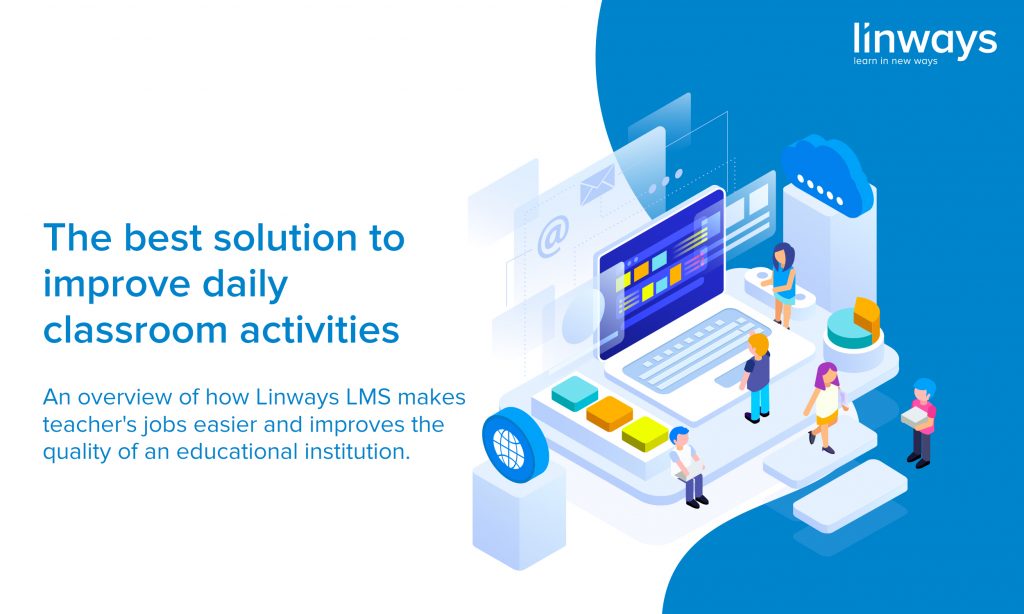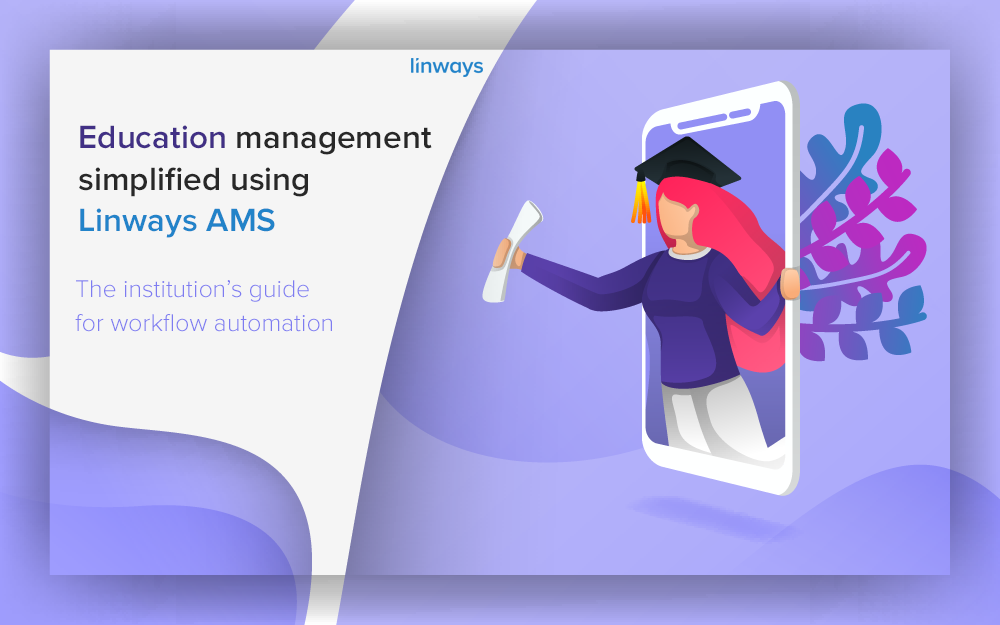An overview of how Linways LMS makes teachers’ jobs easier and improves the quality of an educational institution.
Education technology is on the rise. It’s a field of rapid development and has gotten very popular in the last few decades. Quality based education, student-centric education, online learning, assessments, simplifying the administration, etc. have brought the edtech industry to the forefront of innovation. Many of the largest companies in the world are highly investing in edtech and teaching-learning, not to mention the industry leaders who are making great contributions in terms of money and initiatives.
There’s not even a difference of opinion on whether or not we need technology in our classrooms. It’s there. In fact, it’s everywhere. So in this blog, we are going to discuss some daily classroom activities that are going to be greatly improved with the help of technology.
Before we begin, we don’t want to get carried away and say technology can replace “everything”, or it’s even possible. The role of the teacher is still inevitable, and necessary, inside the classroom. Technology can only be a tool that can improve the way we do things. Something that can assist us in getting the most out of our workflow. So we shall begin.
Digital classrooms.
It’s obviously not practical to say that physical classrooms should become obsolete. ‘Online learning’ cannot simply replace classrooms. We still need the physical structure and functionalities of a classroom and student-teacher interactions for education to provide a meaningful experience. But that is due in large part to how we think about learning and social norms and patterns like economic factors and social norms and parent work schedules (and how parents think about learning), etc. The point is, as schools function now, technology can replace a very large portion of what happens.
One of the most popular questions in digitally enhanced classrooms is “Should the teacher be a guide on the side rather than being a sage on the stage”. We believe, technology integration can help with the right blend of the two models, and can highly improve the overall productivity of the classroom.
In fact, the role of the teacher is much more significant in such a flipped classroom model as compared to the traditional teaching methods.
The students can experiment and experience what they have learned by listening to lectures using Linways LMS’ digital library, and the teachers can facilitate learning during live classes. Teachers can use interactive techniques and provide open-ended problems to solve using what the students have learned. And this would help teachers to assess and correct the errors in the thinking of students.
Students can learn at their own pace– When a student falls behind, they often stay behind while the rest of the class continues with the curriculum. however, the Flipped Classroom model makes the content available to students whenever they can/want to access them, allowing them to remain stress-free as they learn at their own pace.
Teachers can work more closely with students during the class– Teachers can spend time in the classroom working more closely with students, ensuring the progress of their learning by answering individual questions as well as helping them to understand concepts taught in the video lessons.
Students can share concepts with peers– The typical classroom model allows for minimal peer engagement. Students attend the class for lectures and then do their work at home. The Flipped Classroom allows students to view the videos at home and then work with their peers on projects during class time. This increases concept engagement, teamwork skills, and peer understanding.
Student frustration levels remain low– With the standard model, students who did not understand the lecture fully would get frustrated and confused when doing their homework at home, resulting in them lagging behind. This new model allows the students to ask questions in the classroom, reducing frustration levels and ensuring a higher work completion rate. The less frustration a student has on a subject, the more they will be willing to continue learning.
Teachers can group students together– While students work during class time, teachers can assess the lesson level each student is at and can group students together based upon that level. This allows the students to learn and advance together.
Attendance and other daily activities
The attendance and other daily activities including assignments, batch management, teaching timetable, course material distribution, etc. can all be made single with efficient technology integration.
With a dedicated edtech platform in place to help teachers, many of these activities can be made simpler. To add to the benefits, technology can also help faculty save their time and energy to create reports that they otherwise have to create manually. This way, the teachers get more flexibility and freedom to choose the right form of instruction. They can provide individual attention to their students, and the stakeholders can easily gather insightful data from both the administrative and academic aspects.
Quality assurance
Course plans are important for every higher educational institution. Outcome-Based Education is highly preferred by the regulatory authorities while defining the quality standards and even accreditation organizations as the NBA and NAAC use it.
So with Linways, the faculty can create a course plan simply by adding course topics and the system will generate the proposed plan for them with the click of a button. The faculty can also keep on updating their daily work log as an actual plan, and can compare the daily progress with their proposed plan for better insights.
Besides the management perspective, Linways is firmly founded on academic modules like pedagogies and rubrics that’d assist teachers and the institution to improve the quality of education. Linways helps to implement Blended learning, OBE, Student Based Learning, Bloom’s taxonomy, etc.
Student-teacher interactions
Beginning with accessibility and communication, technology can do wonders in student-teacher interactions. With a unifying technology platform, like a Learning Management System, for instance, teachers can get in touch with their students for nurturing the learning culture beyond classrooms, and create a mentor-mentee bond that with improving productivity.
Teachers can conduct group discussions, implement learning theories, share course materials, assess performance, etc. with a well-designed edtech platform. Of course, there are individual tools and products for each of these, but based on what we have observed across the industry, the teacher would prefer much more to have most of these tools available in one place, having able to collaborate and crossover domains, rather than using a couple of different tools for different purposes.
Curriculum mapping
The course planner is one of the core academic functions that can be easily improved using technology. Instead of the teacher having to manually pull the data, create individual definitions, and create a custom course plan for each batch/class, an education management platform can easily simplify the whole process to reduce the workload. It enables the faculty to create plans for the entire semester/year and helps them follow that course plan as the course progresses with the actual plan. The course planner is also an important element for university reports, accreditation reports, etc.
In Linways LMS, faculty creates a course plan, which includes the modules, chapters, course delivery method, and dates. It’s a calendar that says “on this particular day, I’m going to take this chapter using this course delivery method“. This is called a proposed plan. So when you look at the proposed plan, you get an overview of which areas of topics you are going to cover on a specific day. This helps the students to plan ahead and keep track of their curriculum.
Be sure to subscribe to keep updated on our blogs to receive the latest updates and fresh trends in education, technology, and teaching-learning in your inbox.
Also published on Medium.




